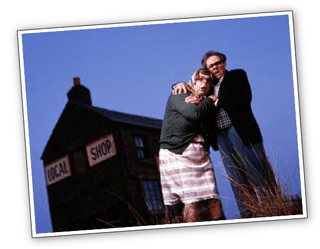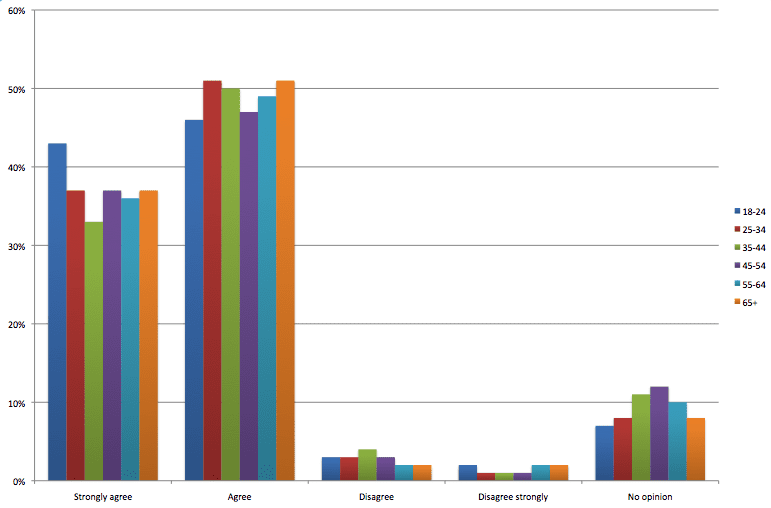Are you local? Are you relevant?
 Many years ago when I was fundraising for YMCA England, we undertook a direct mail campaign to assess the impact of asking people to support local work.
Many years ago when I was fundraising for YMCA England, we undertook a direct mail campaign to assess the impact of asking people to support local work.
YMCA England is comprised of over 130 independent community based charities that work together under the YMCA brand. A characteristic that helps it understand and respond to the needs of each home community.
We focused on one particular YMCA in the south-east of England, creating a mailing pack that demonstrated the situation for homeless young people living nearby.
We had a good set of statistics on local levels of homelessness and youth unemployment along with some case studies that showed the impact this had on young people. I can even remember the line on the outer envelope...
There's a serious problem on your doorstep.
The pack was mailed to prospective donors in areas close to and neighboring the YMCA (including surrounding counties) in a test alongside our national banker acquisition pack that featured a YMCA project in the north of England.
When we analysed the results we were surprised by the response – the further you lived from the YMCA, the more likely you were to give to the 'local' pack. The response rates generated from the areas nearest to the YMCA were really rather poor.
We came up with two possible reasons:
1. The people living closest to the YMCA couldn't afford to give money to charity.
2. People didn't value the work we asked them to fund.
We discounted the first reason as the responses from the national banker pack demonstrated that people living close to the YMCA could afford to give to charity (and were happy to do so).
Which left us considering the fact that in the face of the evidence and the emotional stories they had been presented with, our prospective donors didn't really want to fund services aimed at local young people.
This could be down to nimbyism, prospective donors seeing service provision as adequate or simply that young people in other parts of the country were thought to be in far greater need than those in their own neighbourhood.
I was reminded of this test by some recent research that has been published by Action For Children surrounding the launch of their new online giving platform My Action For Children.
They asked 2,116 people the following question...
'Thinking about the support available to children in your local community specifically, which of the following statements best describes how concerned you are?'
When presented graphically, the results show that the age groups that make up the traditional supporter base of children's charities (people aged 55 and above - the bright blue and orange columns in the chart below) might not be that moved to support local children's charities.
In surveys of this nature, I think it's important to look at the extremes as they can help highlight the number of supporters who feel so strongly about an issue they are likely to give. In this instance, those prospective givers who describe themselves as very concerned are far out numbered by those who aren't concerned at all.
But take a look at another part of the survey and you'll see what donors really value.
When asked if they would like to know specifically what their donations go towards in their local area, donors – as you can see from the chart below – tell us quite plainly that this is something they are very interested in.
And that's an important lesson. We generate the highest response rates when we make an appeal relevant to the donor. What we have to ensure is that we don't confuse local with relevant. They are not always the same things. This means that people may well be more motivated to give to a local hospice or arts appeal - as it might be a service they have experience or need of. But with other areas of charitible activity – such as working with young people – local might not be an effective fundraising hook.
Donors do want to know what they achieve by giving, but if it is related to something they are not particularly interested in, it might not be enough to get their hand in their pocket or purse in the first place.
The full set of research tables can be downloaded here. Thanks to Action For Children for generously sharing them.
Tags In
Related Posts
3 Comments
Comments are closed.
The Essentials

Crack the Code to Regular Giving: Insights, Strategies, and a Special Giveaway!

‘Tis Halloween. Keep to the light and beware the Four Fundraisers of the Apocalypse!

Why do people give? The Donor Participation Project with Louis Diez.

A guide to fundraising on the back of a postcard

What does the latest research tell us about the state of fundraising?








Hi Mark
Really interesting stuff and thanks for sharing the research. It gives me a lot of food for thought, as I’ve traditonally thought that ‘local’ is a massive motivator. This probably comes from 10 years in the hospice movement where you see it day in, day out.
I’ve been trying to do more ‘local’ communications in my current role and might have to do some more testing/analysis before going ahead with things.
Thanks again
Craig
Interestingly I wrote about the YMCA re-brand in Glasgow to the Y People in Third Sector Expert View a couple of weeks a go http://www.thirdsector.co.uk/news/archive/1053222/Brand-Report-YMCA-Glasgow-becomes-Y-People/?DCMP=ILC-SEARCH
They claim the re-brand was driven by the need to have a more familiar, closer feel and also to overcome some of the associations with Christianity. You can but wonder…
Giles
Just stumbled across this statistic in a Jan 2011 Mintel report on local/regional media:
“Fewer than one in three adults agree it is important to them to keep up with what is happening in their local area”.
This would support the argument that local on its own is not sufficient. Relevant is the over-riding consideration?